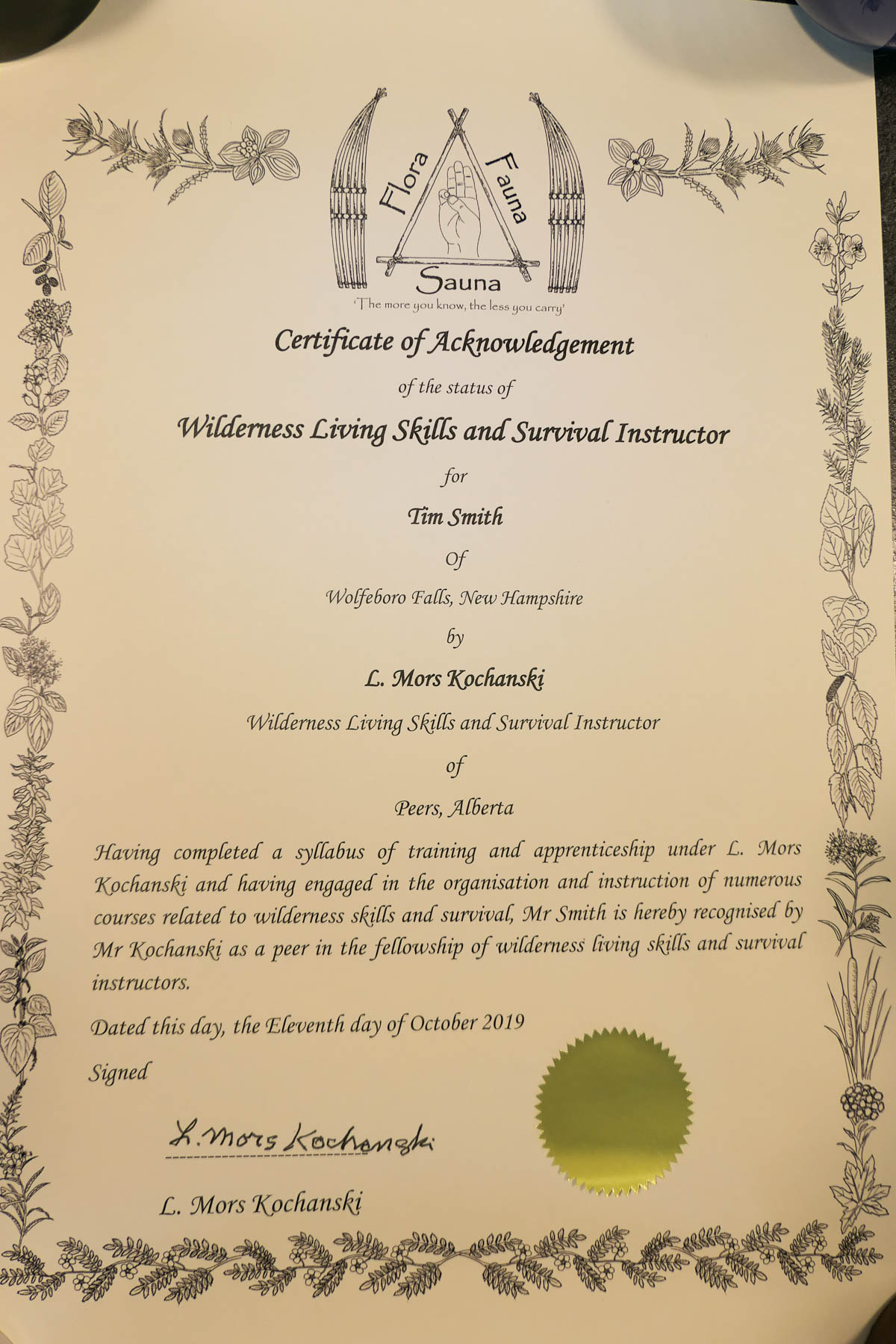When I first met Mors Kochanski in 1996 he showed those of us on the course his collection of books. He had a lot of them. At the time he had been teaching a course for the University of Alberta for 25 years or so, had written extensively, and was a lifelong student of everything outdoors. Before the end of the course, I asked him what the reading list would be if he were to put together a PhD program in bushcraft and outdoor living. He said he’d think about it and send me something. A few months went by and I received a letter from him. It contained a list of 100 books, organized by category, with about 25 having been highlighted as the most important. I made it my business to track down those books and read them. It took me about ten years, but I made it through that list. These were the bygone days before the internet, at least for me, so finding the books on the list was quite an ordeal. I remember when I learned you could search for books online a few years later, and was finally able to get a copy of Stefansson’s Arctic Manual. It made finding things much easier because I was no longer limited to the tiny selection in the small town used bookstores. Good memories. That list became the basis of the Jack Mountain Bushcraft bibliography.Here’s a link. Please note that I haven’t edited that document since 2011 or so, meaning there are lots of new additions..
At the field school we now have the Athenaeum which contains physical copies of all those books.Some of the books in the collection are quite rare. And some that used to be common around used book stores are now becoming quite rare. And there are a handfull of which I’ve never seen another copy. With these older, hard to find books, I’m working on scanning them into what I call the Jack Mountain Digital Archives. This is where I keep copies of old and hard to find books and videos so that I can share them within our community. And this past year a few people on a semester course turned me on to some new tools that are great at getting this job done (Genius Scan app). My goal in preserving these is to create a resource for future students, and to pass it along. So if I ever meet anyone who wants to read Cree Trappers Speak, they won’t have to search for ten year before finding a copy like I did. Or sneak into the Dartmouth College library to photocopy Traps And Snares Of The Labrador Peninsula from 1896. Yes, I did that too.
On these short, cold, snowy December days, I have been waiting for a few unrelated things to take place, and using some of the downtime to scan old books. I share some of it on our online community at BushcraftSchool.com.









Comments on this entry are closed.
Thanks for the comment. I will be working on updating the bibliography with those titles that are in the digital archives. Once I get that done, I will look to upload and back up the whole project.